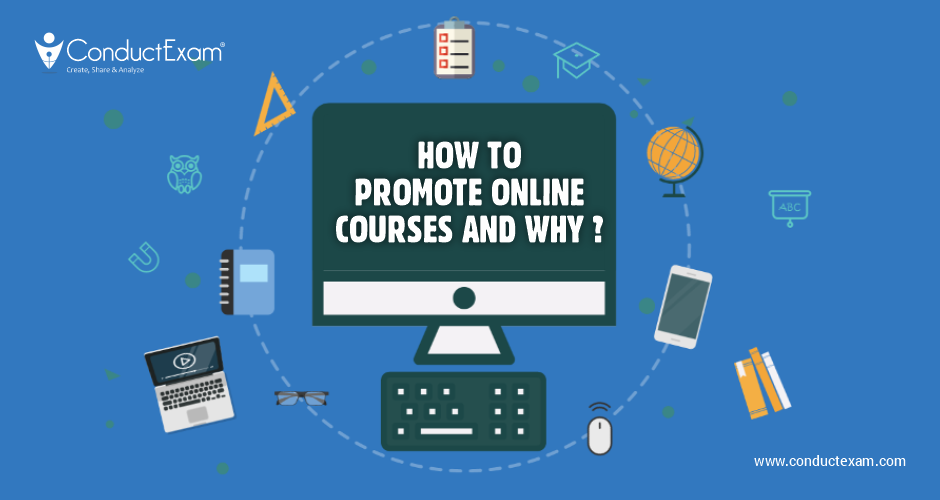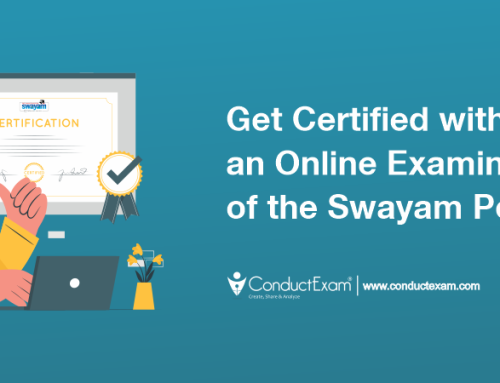Introduction
Online Courses are the best way to learn something from your place. Your sales reps face a number of challenges and a lot of negativity that can weaken or demotivate them. It is they who face a large number of consumers with various expectations and desires. Each step of failure led them to success. And despite that, managing a sales team is no less difficult. As a manager, you have to keep them motivated, help them through bad times, and most importantly, manage every sales activity effectively.
Sales team management is the key for any company to achieve its sales goals and sell smarter. In today’s technological age, where the market is diverse, it is important to effectively manage the sales team to achieve sales. You may be wondering how online CRM software can help you manage your sales. You heard right! Implementing online CRM software will help you manage your sales performance.
Here are some of the best online course marketing strategies for almost any course focused on any topic. These are not quick tactics, but long-term strategies to build momentum over time. Keep this in mind as you read through each strategy, starting with one of the most important… content marketing.
1. Content marketing
What is content marketing? Simply put, it’s about creating and sharing online content designed to generate interest in a brand rather than sell a specific product. Sales are part of the content marketing process, but unlike many types of marketing, it’s not the only goal.
Content marketing comes in many forms, including:
Blogs, Vlogs, Podcasts, Social Media, Content Infographics, eBooks, Email, Online Short Courses. As a course creator, content creation is undoubtedly, something that comes naturally to you. Therefore, content marketing should be the first strategy you use to promote and sell your courses. You can do a lot with content marketing, but when we work with students we encourage them to focus on:
Create (and maintain) a blog
We believe that all course creators should have a blog on their websites. Here’s the easiest way to:
-
Share your ideas
-
Build authority
-
Build an in-depth content library
Writing blog posts focused on your main topic will allow you to showcase your expertise to potential new students. However, it’s not just the value you share that matters, but the social proof you create. Think about it… when you visit someone else’s site, what is the first page you look at?
Their “about” pages are usually popular, followed by their blogs. Because? Simple… you wonder if they know what they are talking about. Your potential new students want to get to know you too. Blogs make it possible. However, writing a few blog posts is not enough. You need to maintain your website and keep adding new content and updating it.
-
Podcast Hosting
Another great way to share your ideas, build authority, and develop a repository of quality content is to start your own podcast. This way you can achieve many of the same goals as blogging, just in a different environment. Today people want to consume content on the go. It is not always possible to read, but listening is often possible. The same rules apply to podcasting as blogging…consistency. This doesn’t mean you have to post a new show every week. A popular approach is to have “seasons” where you release new episodes the same way TV networks release their shows. The schedule you choose is up to you, but consistency is key.
-
Start a video channel
The same applies here as above because a video channel (usually on YouTube or TikTok) allows you to reach people in an interesting way. Video is popular and since you probably already have videos in your online courses, this is a very important tool for you. Together, blogging, podcasting, and vlogging have the power to take you out into the world.
It provides free value to your audience while sharing ideas and building momentum. The good news is that you can often create a single piece of content, such as a video, and edit it into a podcast episode, a blog post, and a new video on your channel. Creating consistent new content like this is key for any course creator, not least because it helps you rank on Google and potentially reach tens of thousands of people for free.
2. SEO optimization
SEO is difficult. This changes several times a year as Google changes its algorithms. It’s hard to keep up, and even if you find a tactic to help you climb the rankings, it won’t last long. The good news is that you don’t need a quick-fix tactic (and you don’t need to become an SEO expert). When you create quality content as described above, you should tick most of the Google boxes. All you need to do is optimize your content to reach the largest possible audience. This is why SEO is as important as ever. You can only reach large amount of people on your own.
Even if you have a large presence on social media, it’s hard to get your content in front of them without paying for ads. Google, on the other hand, can bring tens of thousands of people to your site every month; FREE, grows exponentially every week as your content becomes more popular. This doesn’t mean you should only create content for SEO purposes, but ALL content you create should have SEO in mind. We won’t cover many of the SEO elements you should consider here, but we will highlight some key aspects to focus on.
-
Keyword Research
Use a tool like SEMrush to make sure all your content is targeting relevant keywords. This single task ensures that all your content has a purpose (in the eyes of Google) and also ensures that you are creating content with your core customer profile in mind. This helps to know your audience, as it also does know your competitors, and analyzing competitor keywords is important to gain quality SEO traffic.
-
On-Page SEO
It refers to optimizing your individual web traffic and blog posts that can help you make further strategies to rank your website higher on the search engine result page.
-
Off-page SEO:
It refers to efforts made outside of the website to improve search engine performance, such as link building, guest posting, etc. Link building is the practice of building quality backlinks to a website to improve your search rankings, often using backlink distribution strategies.
3. Live Webinars
Essentially, hosting webinars allows you to provide a lot of value to your audience and delve deeper into key topics. This is an especially valuable tool for course creators, as each of your lessons is like a mini-webinar. Hosting live webinars gives you the opportunity to showcase your teaching skills and show prospective students what they have access to. ‘s live webinar is a valuable opportunity for them to get direct access to you and your expertise (including a QandA session at the end) and gives you the opportunity to not only showcase your expertise but also promote your course. A good webinar requires a good instructor.
As the creator of the course, you are the teacher. When developing a webinar, focus on the ability to teach and provide value. You can do this with a webinar program like GoToWebinar and WebinarNinja, or simply host regular Facebook Live broadcasts in your private group or community.
4. Run Online Advertising
Campaigns So far we’ve focused on free organic strategies that will help you gain momentum over time. These are great ways to promote your online course, but the problem is time. Content creation, SEO optimization, and ranking high take time. Building a mailing list, managing it, and promoting the course through regular webinars takes time. But if you need success now, you might need some help getting these other strategies up and running. Paid advertising campaigns are used here.
You can use a variety of ad campaigns, but it’s usually wise for course creators to focus on:
Facebook Ads
This is the largest social media platform with the most advanced targeting (and retargeting) methods. You can send content, messages, and offers relevant to specific people. When it comes to selling an online course and growing your audience, Facebook ads lead the way.
Google Ads
As valuable as social media is, most people still turn to Google when they have a problem to solve. Organic reach is important, but that doesn’t mean advertising on Google isn’t. Paid and organic outreach together are the best ways to drive relevant people to your content/website.
Outbrain
Showing up in people’s news feeds and searches is important, but most people spend a lot of time just browsing the web. This is especially effective if you are retargeting people who have already visited your website or subscribed to your email list. It helps you to be everywhere, to appear to be visible everywhere (a great way to increase authority).
YouTube
This last one only applies if you have a YouTube channel. You don’t have to create video content to advertise on YouTube, but it helps if the video plays an important role in your marketing and branding.
5. Get posted on popular podcasts
It’s hard to promote your online course and reach a large audience on your own. Unless you already have a large, established audience (or a very large budget), it’s important that you partner with others in your industry to increase your reach. There are several ways to do this, and one of the best is to appear on other people’s podcasts (or YouTube channels). The premise is simple: the presenter interviews you on a topic of your choice.
Here. You bring value to their audience and introduce them in return. Whether you’re selling a book, product, or service, or promoting an online course, podcasting is one of the best strategies available. However, there is a hidden benefit that many people overlook… because, in addition to getting to know a new audience, you are also interacting with an expert in your field. As we will see later, this can be effective for both of you.
For You: Campus Recruitment strategies to improve your hiring
Conclusion
These above-mentioned strategies will help you market your online course, reach new people, and build a student base. They help you stand out in a constantly competitive market. But those aren’t the only things you can focus on.






Leave A Comment